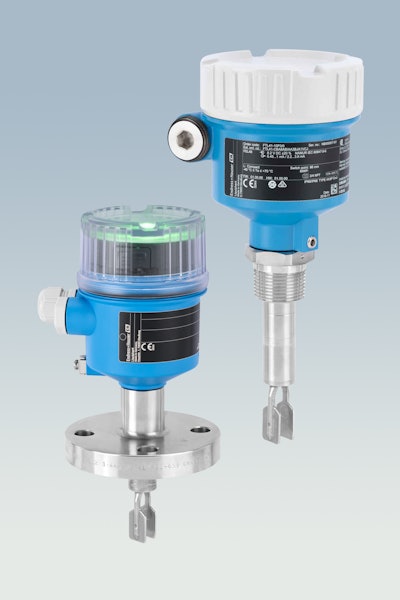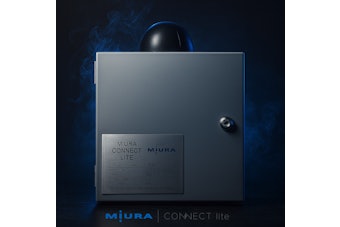
This content was written and submitted by the supplier. It has only been modified to comply with this publication’s space and style.
Endress+Hauser, a provider of measurement instrumentation, services, and systems for industrial process engineering, releases Liquiphant FTL51B and FTL41 vibrating fork (vibronic) level instruments. The FTL51B is made to feature Industry 4.0 and IIoT capabilities. These include access via wireless Bluetooth technology, automatic proof tests and verification, and easier commissioning via a mobile device. In addition, a high-visibility LED is supposed to provide operational clarity.
According to the company, the Liquiphant FTL51B can be used in storage tanks, containers, and pipes for point-level detection of all types of liquids. The instrument’s vibronic sensor is designed not to be affected by changing media properties, flow, turbulence, gas bubbles, foam, vibration, or build-up. The instrument is meant to work in process temperatures of -58 to 302°F (-50 to 150°C) and pressures up to 1450 psi (100 bar). It can be used in SIL2 and SIL3 hazardous locations and has built-in automatic maintenance and verification functions.
The general-purpose FTL41 is similar to the FTL51B. But, it is meant to work at lower pressures, up to 580 psi (40 bar), and with a narrower temperature range of -40 to 302 °F (-40 to 150 °C).
Both are designed to perform proof tests, with the FTL51B meeting SIL and WHG (Water Resources Act) requirements. The proof test can be activated remotely at a control system, or locally via a magnet or push button test. The proof test is meant to diagnose the sensor for corrosion and build-up, and to ensure the instrument is operating properly. Verification can be activated either manually or automatically via Endress+Hauser’s Heartbeat Technology, providing a verification report sufficient as documentation for various regulatory agencies.
Access via Bluetooth technology and a mobile device allows users to identify each device, commission it, check the status, start a proof test, and download verification documentation. Bluetooth is designed to have a range of 33 ft. This allows a technician to access Liquiphant instruments installed in hard-to-reach locations, such as at the top of tanks.
























